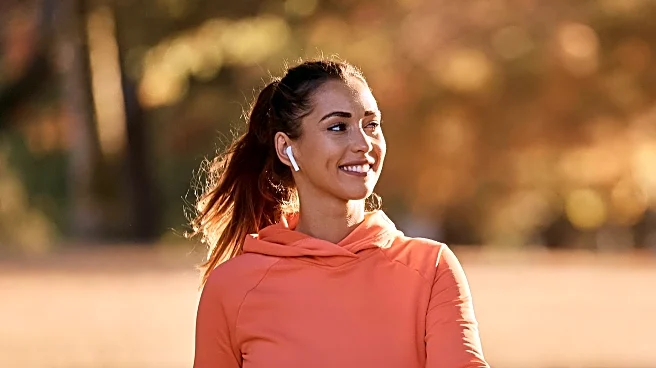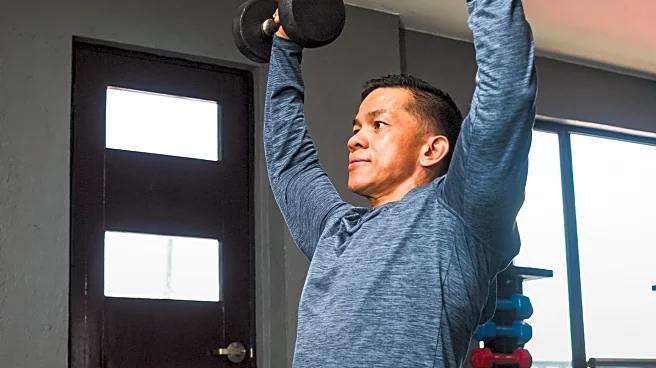What is the story about?
What's Happening?
Weighted walking, a fitness trend involving the use of ankle or wrist weights, is gaining popularity for its potential benefits in weight loss, muscle toning, and posture improvement. According to Madrid-based trainer Juan Ruiz López, using weights during walking increases energy expenditure, allowing individuals to burn more calories compared to normal walking. However, López cautions that improper use of weights can lead to joint stress and discomfort, particularly if the weights are too heavy or if the user does not allow for an adaptation period. Weighted vests and backpacks are recommended as safer alternatives, as they distribute weight more evenly across the body. López advises starting with short walks and gradually increasing duration, while listening to the body to avoid injury.
Why It's Important?
The trend of weighted walking reflects a broader interest in fitness innovations that promise enhanced results. As more individuals seek efficient ways to improve their health, understanding the benefits and risks associated with such practices is crucial. Weighted walking can offer significant advantages in terms of calorie burning and muscle strengthening, potentially appealing to those looking to maximize their workout efficiency. However, the risk of injury underscores the importance of proper technique and gradual adaptation. Fitness enthusiasts and trainers must balance the desire for quick results with the need for safety, ensuring that new trends do not lead to adverse health outcomes.
What's Next?
As weighted walking continues to gain traction, fitness professionals may develop more structured programs to safely incorporate weights into walking routines. This could include guidelines on weight selection, duration, and frequency, as well as recommendations for monitoring physical responses to prevent injury. Additionally, the fitness industry might see an increase in the production and marketing of weighted accessories, with a focus on ergonomic design and user safety. Public health campaigns could also emerge to educate consumers on the safe use of fitness equipment, promoting informed choices and reducing the risk of injury.
Beyond the Headlines
The rise of weighted walking highlights a cultural shift towards personalized fitness experiences, where individuals seek tailored solutions to meet their health goals. This trend may influence the development of wearable technology that tracks and optimizes weighted walking sessions, integrating data on heart rate, calorie expenditure, and muscle engagement. Furthermore, the emphasis on safety and adaptation could lead to broader discussions on the importance of gradual progression in fitness, challenging the 'no pain, no gain' mentality that often dominates workout culture.
AI Generated Content
Do you find this article useful?















